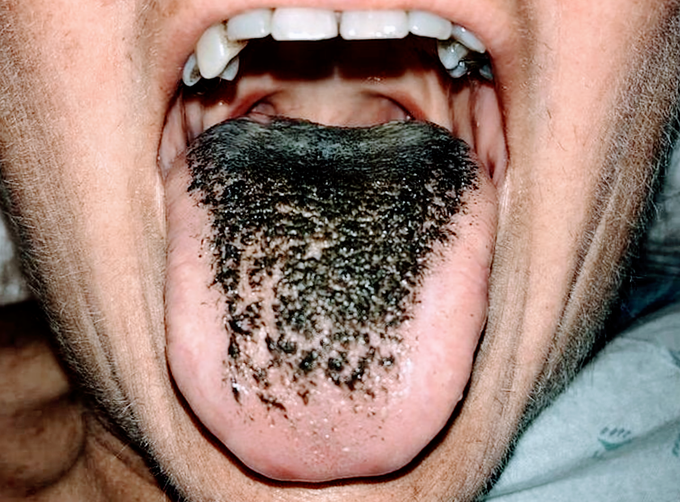


Black hairy 👅
Black hairy tongue is a condition of the tongue in which the small bumps on the tongue elongate with black or brown discoloration, giving a black and hairy appearance. The appearance may be alarming, but it is a harmless condition. Predisposing factors include smoking, xerostomia (dry mouth), soft diet, poor oral hygiene and certain medications. Management is by improving oral hygiene, especially scraping or brushing the tongue. The cause is uncertain, but it is thought to be caused by accumulation of epithelial squames and proliferation of chromogenic (i.e., color-producing) microorganisms. There may be an increase in keratin production or a decrease in normal desquamation (shedding of surface epithelial cells). Many people with BHT are heavy smokers. .
it is due to the enlargement of fungiform papillae of the tongue
Treatment consists of self care Treatment involves brushing the tongue regularly with a toothbrush and avoiding tobacco products. Self-care Quitting smoking Quitting smoking tobacco. Brushing the tongue Gently scrubbing tongue with a toothbrush to cleanse tongue. Oral hygiene Keeping the mouth clean by regularly brushing teeth, flossing and using mouthwash. High fiber diet A diet rich in high-fibre foods, such as whole grains, beans, fruits and vegetables.
These additional symptoms include: Burning on the tongue: The bacteria or yeast growth may cause a burning or stinging sensation. Gagging or tickling sensation: The extra-long FP may tickle the roof of your mouth or the back of your throat, especially as you swallow. If you’re extra sensitive to this sensation, you may experience gagging. Bad breath: The bacteria or yeast growth occurring in the FP can cause a smell. Rinsing with mouthwash to remove the smell may make the issue worse. Abnormal taste: The bacteria or yeast growth occurring on your tongue may alter the way food tastes. The extra-long FP can even cover up taste buds and prevent you from properly tasting what you eat or drink.


